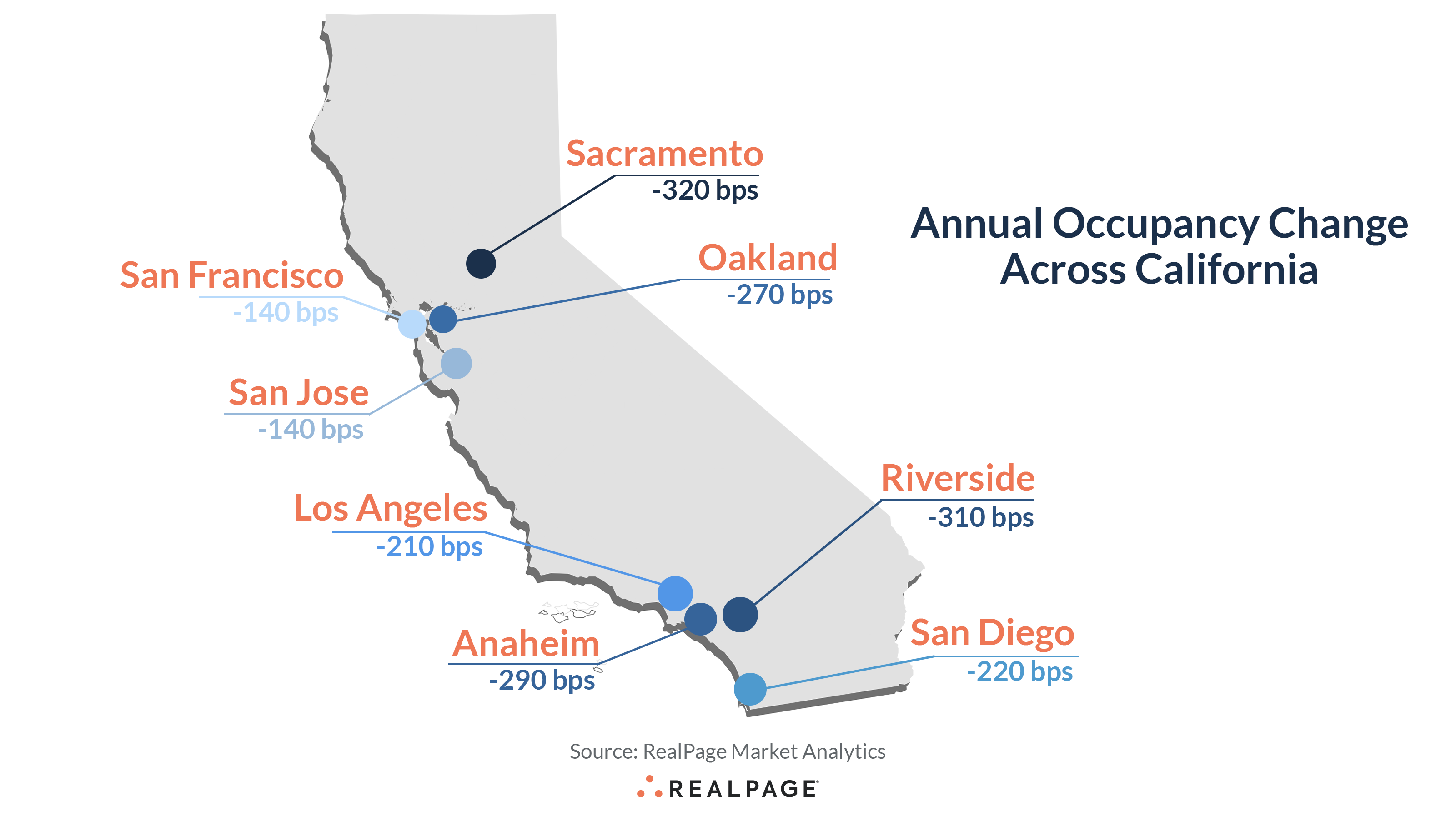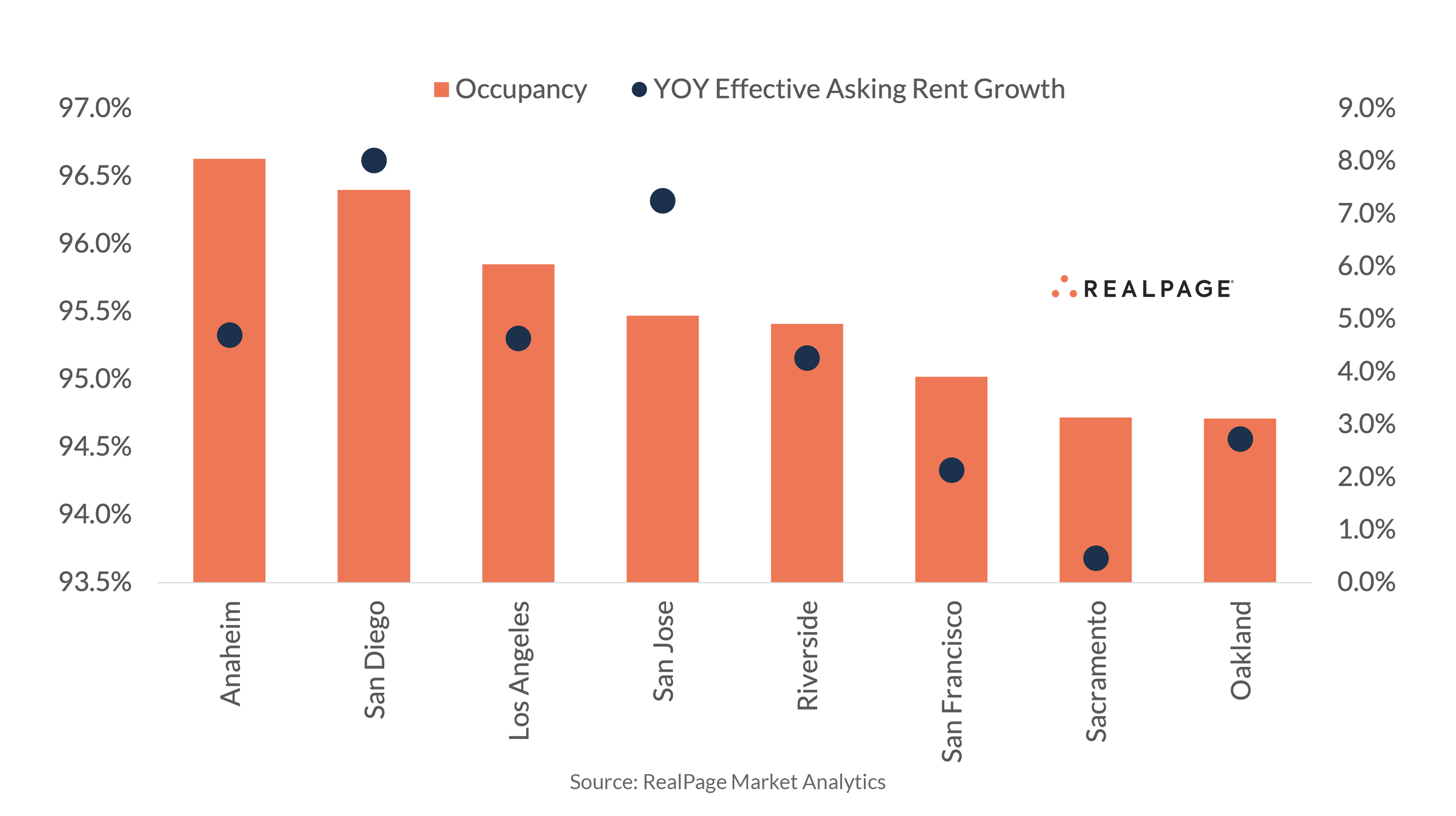Apartment Occupancy Falls Across Every Major California Market

Net move-outs across California’s major markets prompted a contraction in occupancy in calendar year 2022 and again in January 2023. Occupancy across the Golden State’s major markets fell between 140 and 320 basis points (bps) on an annual basis, according to RealPage Market Analytics.
Seven of California’s eight major markets recorded deep net move-outs in the last three months of the year with Los Angeles ranking as the worst market for demand in calendar year 2022. San Jose was the only exception, recording mild absorption in 2022. As a result, occupancy dipped statewide.
Sacramento recorded the deepest contraction in occupancy, falling some 320 bps in the year-ending January 2023 and marking the market’s worst annual performance in the RealPage dataset. Following closely behind was Riverside where occupancy fell 310 bps, a 13-year low for annual occupancy change. For comparison, occupancy across the U.S. fell only 270 bps year-over-year. Oakland rounded out the three worst performances across the state with a 270 bps occupancy decline, in line with the U.S. norm. Even in San Jose, the only market with positive absorption in 2022, occupancy still fell 140 bps in year-ending January as supply outpaced demand. San Francisco also saw occupancy fall 140 bps. The remaining Southern California markets of Anaheim, Los Angeles and San Diego also saw occupancy decline considerably.
On a monthly basis, seven of the eight major markets saw occupancy backtrack or remain flat in January. Three markets saw occupancy contract 20 bps on a month-over-month basis: Oakland, Riverside and Sacramento. Meanwhile, occupancy remained flat in Anaheim, San Francisco and San Diego, in line with the U.S. average. Only San Jose saw occupancy improve in January, tightening a slight 10 bps.
Occupancy across California ranged from roughly 94.5% to 97% in January. There was a nearly 200 bps spread from the market leader (Anaheim) to the market laggards (Sacramento and Oakland). Anaheim led with occupancy at 96.6% followed closely by San Diego at 96.4%. Los Angeles rounded out the top three markets for occupancy at 95.9%. Despite falling demand and occupancy levels, three other California markets outpaced the West region average (95.0%) for occupancy in January: San Jose (95.5%), Riverside (95.4%) and San Francisco (95.0%). Market laggards Sacramento and Oakland tied for the lowest occupancy performance, both at 94.7% as of January, marginally below the U.S. norm (94.8%).
The outlook for 2023 calls for occupancy to hover around 95% to 96% in all major California markets. However, with macroeconomic challenges at play, it remains to be seen how the California market will react to continued layoffs in the tech sector and downshift in hiring statewide. Still, one tailwind for California remains limited supply levels across the chronically undersupply state.








